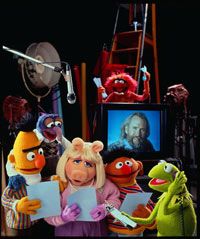In July 2007, an announcement about puppets got significant attention in the international media. Jim Henson's family stated that it planned to donate more than 500 puppets, as well as props and sketches, to the Center of Puppetry Arts in Atlanta. In order to receive the collection, the center must raise the funds to build a wing that will house and exhibit it. The collection will span the more than 50 years of Henson's work in TV and film.
If the name Jim Henson isn't familiar, you probably know one of his most popular creations: a small, bright-green frog with long limbs, round eyes and an endearing way of throwing his arms over his head and yelling "Yaaaay!" when he gets excited. He's been on television for more than 50 years and in movies for nearly 30. Kermit the Frog is one of Jim Henson's puppets, better known as Muppets, and an international ambassador for puppets. Kermit and Jim Henson were on hand for the opening of the Center for Puppetry Arts in 1978. Many people refer to Jim Henson as the most influential American puppeteer ever.
Advertisement
But what exactly is a Muppet? According to some sources, including Jim Henson's wife, Jane, "Muppet" is a combination of the words "marionette" and "puppet." (A marionette is a specific type of puppet with strings attached to a control bar or bars, operated by a puppeteer from overhead.) However, Henson himself always said that he came up with the word "Muppet" because he liked the sound of it.
Muppets come in all sizes, from just a few inches long to more than 8 feet tall. They can be hand puppets, rod puppets or a combination of the two. Some Muppets are even worn by their operators. Muppets are also just about every shape, color and style imaginable -- they can look like an animal, a person or an imaginary creature. But all Muppets have a few things in common: They're made from soft, flexible materials, they're perfectly suited for TV and movies, and they have unique, dynamic personalities.
In this article, we'll learn all about Muppets -- the different types, who operates them, where they come from and what they've been up to lately. First, we'll look at how Muppets are made.

